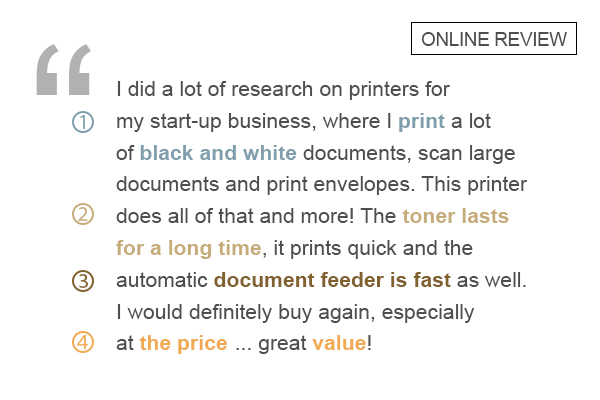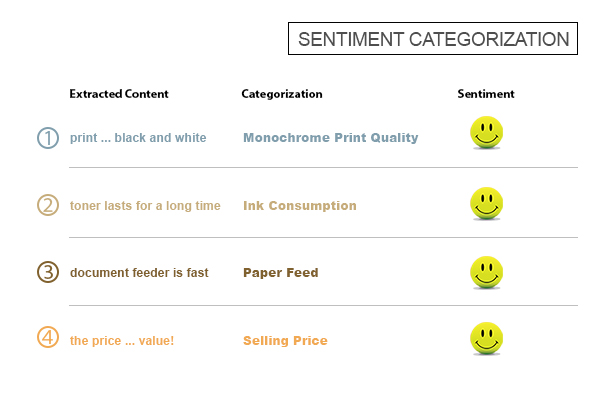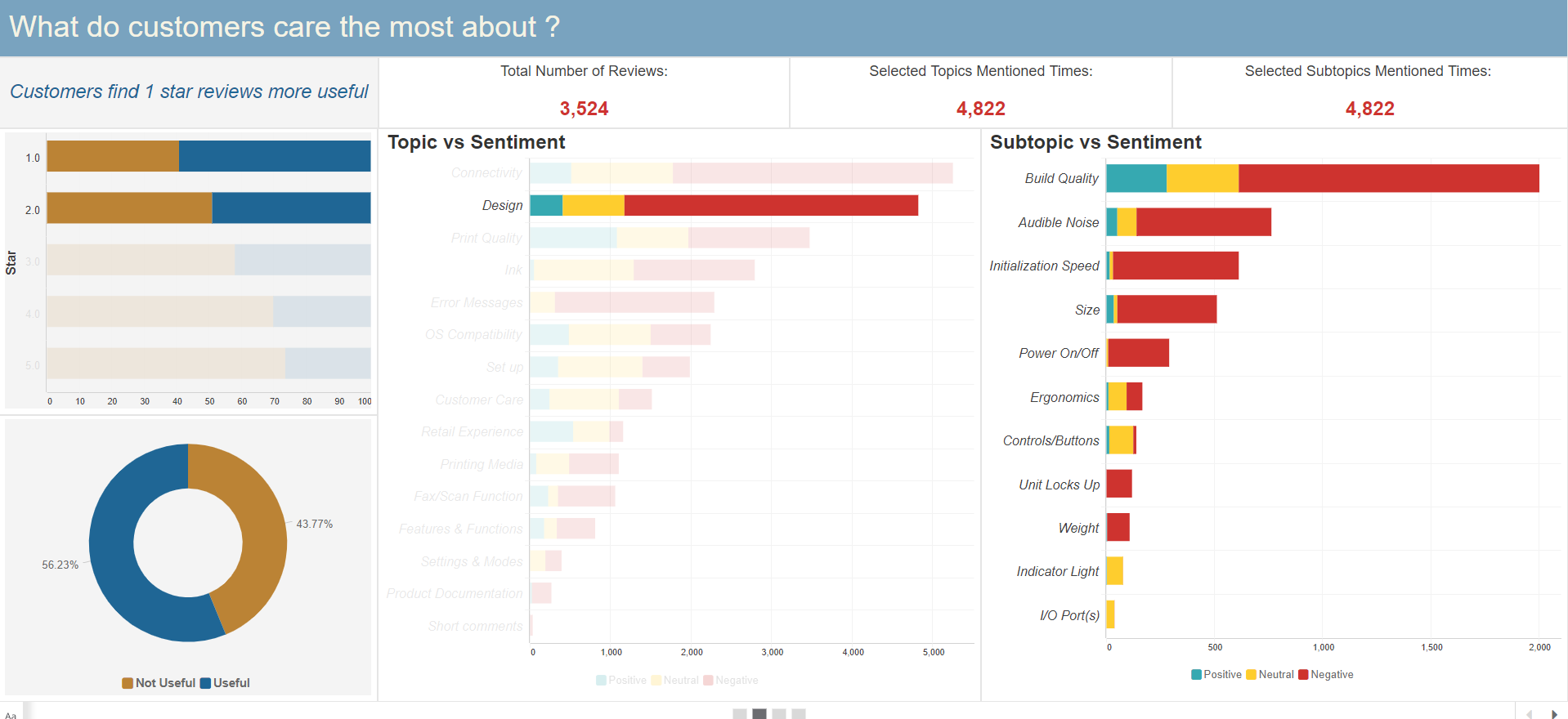 In 2018, US customers spent over $500 billion on online shopping. Often, customers write reviews to describe their experience and sentiments about the products they purchased. Since the reviews are publicly available to the world, they naturally play an important role in influencing potential customers’ purchase decisions, steering them towards or away from buying certain products. Online product reviews represent a unique source of unbiased information: customers are sharing their opinions with other potential customers, bypassing the manufacturer.
In 2018, US customers spent over $500 billion on online shopping. Often, customers write reviews to describe their experience and sentiments about the products they purchased. Since the reviews are publicly available to the world, they naturally play an important role in influencing potential customers’ purchase decisions, steering them towards or away from buying certain products. Online product reviews represent a unique source of unbiased information: customers are sharing their opinions with other potential customers, bypassing the manufacturer.
Inquisitive product manufacturers can gain invaluable insights from the analysis of online customer reviews. First, they can learn opinions of much broader groups of customers they might have not ever heard back from through any other channel. Second, they can better understand customers’ needs and preferences. Third, they can evaluate customers’ perceptions of their offering against the competition, to the level of individual features of the product. Product manufacturers can find answers to questions like:
- What do customers in the current market care the most about?
- What type of customer review has more influence over potential customers’ purchase decisions?
- What are the customer sentiments towards each aspect of the product?
- Which aspects of the product are deal breakers?
- Do customers see the product’s competitive advantages over competitors’ products?
- How do customer preferences shift over time?
Pioneering companies are launching special Web Intelligence teams to gain knowledge from the product reviews customers are publishing on social media. However, timely and accurate analysis of large amounts of textual reviews is not an easy task.
Customer Review Data
A typical product review can discuss several detailed aspects of the product, from functional features to price. For example, a review might say:

Thousands of reviews like this are found on the websites of e-retailers like Amazon, Best Buy, and Walmart. Overall, the reviews cover several dozen aspects for a single product, which is just one of the many products that are offered by a brand, as well as by other competing brands in the US market.
In order to see the big picture and have true insights about the current market, all product review data—and not just a small sample—needs to be analyzed. This tends to be a challenge, however, because manual analysis limits the manufacturer’s ability to analyze all available data on their products. Furthermore, due to the growing size, velocity, and complexity of this data, it becomes difficult for manufacturers to keep up with their product review data, not to mention the product review data of their competitors.
On top of this, manufacturers operate in a dynamic market. The data is constantly changing as new products are launched and old products are taken off the shelves. The amount of data is growing as customers are adding reviews every minute. For instance, Amazon.com and Bestbuy.com alone contain more than 60,000 product reviews for just 12 printer models currently offered by retailers. Now imagine expanding this analysis to all printer models across the four major printer brands. Clearly, the manual analysis of these data would be impossible, given the sheer amount of reviews. This is why automated analysis provides the only viable solution.
Automated Analysis Approaches
 In order to gain actionable insights from the constantly growing number of online customer product reviews, manufacturers could greatly benefit from implementing a solution that covers all aspects of the analysis process. This solution should automate data acquisition and analysis, text analysis, and business reporting tasks. The PolyAnalyst™ text and data mining system enables the user to accomplish all of this.
In order to gain actionable insights from the constantly growing number of online customer product reviews, manufacturers could greatly benefit from implementing a solution that covers all aspects of the analysis process. This solution should automate data acquisition and analysis, text analysis, and business reporting tasks. The PolyAnalyst™ text and data mining system enables the user to accomplish all of this.
For example, one of the product solutions we’ve built automatically procures product reviews of interest from the websites of e-retailers like Amazon.com and Bestbuy.com, cleans the data, and performs in-depth natural language processing to categorize each review based on specific aspects and the associated sentiment. Then the solution generates interactive graphical reports summarizing business intelligence insights for product managers. The solution automatically updates the report at a pre-defined frequency determined by the user.
Customer Insights Gained
Let’s examine what types of insights one can gain from analyzing online product reviews. Here is a sample page from the web report of the automated analysis solution described above:
Figure 1: Example page of the interactive web report
This page displays key topics customers cared the most about with respect to printers they purchased. At the top of the web report page, we can view statistics including the total number of reviews and how many times a particular selected topic was mentioned. The bar charts display a total of 15 main topics and the top 15 out of 50 sub-topics that were discovered in the text of the reviews. Each bar in these charts displays the overall sentiment customers had toward the corresponding topics (positive, negative, or neutral), designated by color. On the left, we see the break-down of what types of reviews customers found to be most useful when making purchase decisions. Overall, we see that customers found that only about 35% of the reviews contained useful information. We also see that 1- and 2-star reviews tend to be more useful to customers versus the 4- and 5-star product reviews.
Since the 1- and 2-star reviews are the most impactful, it might be helpful to look at the topics discussed in those reviews and determine which aspects customers did not like about the products. We can readily drill-down and focus only on 1- and 2-star reviews. Upon selecting further a particular topic in these reviews (Design, in our example), the web report page looks like that:

Figure 2: Example of Drill-down for an interactive web report
Now we see at the top of the page, there are 3,524 reviews of the product that were below 3-stars. Customers found 56% of these reviews useful. For the selected topic, “Design”, we see that it was mentioned 4,822 times in the text of the reviews, with negative sentiment mostly. Also, we can see a list of the most common sub-topics for Design, including things like: Build Quality, Audible Noise, Initialization Speed, Size, and Power On/Off.
By comparing the two figures, we discover that the “deal breakers” for purchasing a product are not always the most frequently mentioned topics and subtopics. For example, when we look at all the reviews in Figure 1, we see that overall the top 3 topics are: Print quality, Connectivity, and Set up. However, when we examine just the 1- and 2-star reviews in Figure 2, we see that the top 3 topics are: Connectivity, Design, and Print Quality. This suggests that while initial printer set-up is a common topic in the reviews, it was not as much of an issue for customers. Whereas, the printer’s product design seemed to elicit a lot of feedback from customers that gave below 3-star ratings of the product.
Empowered by this automated analysis and reporting solution for online product reviews, product manufacturers can obtain the actionable insights they need at any given time. Moreover, the insights found from the analysis can be applied to monitor the product performance over time, improve the design of new products, determine product pricing, and identify product marketing targets.

